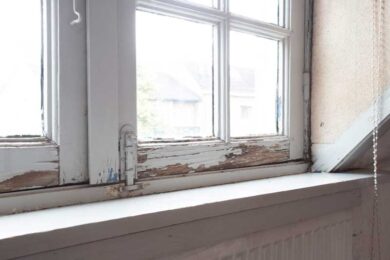Finest Practices for Ensuring Safe and Complete Lead Violation Abatement
Dealing with lead violation abatement calls for a multi-faceted approach to make certain both safety and security and conformity. It's the final clearance process, entailing detailed examinations and research laboratory screening, that really confirms a lead-free setting, making certain long-lasting security. How do these techniques adjoin to ensure comprehensive lead reduction?

Initial Analysis
Conducting a first evaluation is an essential very first step in lead violation abatement. This phase includes an in-depth analysis of the residential or commercial property to determine the existence, level, and certain places of lead-based threats. Qualified experts, such as certified lead inspectors or take the chance of assessors, should carry out an extensive website assessment, utilizing devices like X-ray fluorescence (XRF) analyzers to properly find and determine lead focus in paint, dirt, dirt, and water.
The analysis has to likewise include a testimonial of the building's history, previous records, and any problems or wellness issues reported by passengers - Lead Removal Contractors. Recording the findings thoroughly is essential, as these records create the basis for creating an effective abatement approach. A comprehensive evaluation additionally involves sampling and lab evaluation, which are essential to confirm the presence of lead and guide succeeding activities
In addition, it is vital to connect the outcomes transparently to all stakeholders, consisting of residential or commercial property owners, occupants, and governing authorities. By ensuring that the initial assessment is carried out with precision and rigor, experts can lay a solid foundation for a targeted and efficient lead reduction procedure, inevitably guarding public wellness and ensuring conformity with governing criteria.
Correct Control
Correct control is vital to stop the spread of lead impurities throughout reduction activities. Efficiently managing containment decreases the threat of lead dirt and debris migrating to non-work locations, therefore guarding both the atmosphere and individuals outside the immediate job area. To accomplish appropriate containment, an impermeable obstacle of plastic sheet must be developed around the workplace, guaranteeing all joints and sides are safely sealed. Lead Removal Contractors. This obstacle must extend from flooring to ceiling and be taped to avoid any kind of leakages.

Regular examinations of the containment location are required to examine for breaches or weak points in the barrier. Any kind of determined concerns ought to be without delay dealt with to keep the integrity of the control. By adhering to these methods, reduction projects can successfully control lead contamination and alleviate affiliated health and wellness threats.
Worker Security
Making certain worker security is extremely important during lead abatement tasks to stop work-related direct exposure to hazardous lead bits. Crucial steps consist of using individual protective devices (PPE) such as respirators, handwear covers, and full-body matches especially developed to block lead dirt and fumes. Employees need to undergo extensive training on the right use and upkeep of PPE, consisting of fit testing for respirators to guarantee maximum effectiveness.
Design controls, such as neighborhood exhaust air flow systems, are crucial in reducing airborne lead concentrations in the work atmosphere. Administrative controls must likewise be applied, consisting of restricting the period of direct exposure and revolving employees to lower specific direct exposure times. Normal clinical monitoring and organic tracking are vital for very early discovery of lead absorption, allowing timely intervention and treatment.
Furthermore, developing a purification method is crucial. Employees need to follow stringent decontamination treatments prior to breaks and at the end of their shift to stop lead dust from being carried outside the job location. This includes extensive hand and face washing with lead-specific cleaner and altering out of contaminated clothing.
Thorough Cleaning
Preserving a safe job setting prolongs beyond employee security and encompasses thorough clean-up to guarantee lead particles are extensively eliminated from the site. The procedure of precise cleanup is essential in stopping the recontamination of the visit our website eased off location and protecting both current and future passengers.
To accomplish a comprehensive clean-up, all workplace must be methodically decontaminated. This includes the use of specialized HEPA (High-Efficiency Particulate Air) vacuum and wet-wiping methods to record and eliminate great lead dust that might have settled on surface areas. It is important to cleanse all horizontal surface areas, consisting of floors, home window sills, and countertops, in addition to upright surfaces that may have entraped lead particles.
Employees have to wear proper personal protective tools (PPE) throughout cleanup to prevent direct exposure to residual lead dust. Made use of cleansing materials such as wipes, sponges, and mop heads need to be dealt with according to contaminated materials disposal policies.

Final Clearance
Final clearance is the vital concluding phase of lead abatement that establishes whether the site is safe for reoccupation. This important action involves extensive assessment and screening to verify that all lead risks have been successfully removed. The process begins with a visual evaluation by a licensed lead-based paint assessor or threat assessor to make certain no visible dust or debris remains. This is followed by gathering dust wipe samples from different surfaces, including floors, windowsills, and other horizontal surfaces. Lead Removal Contractors.

Last clearance testing not just navigate to this website secures future passengers but additionally makes certain compliance with local, state, and government policies. Furthermore, it functions as a documented validation of the reduction professional's adherence to industry finest practices. Ensuring a thorough and successful final clearance is necessary in safeguarding public health and cultivating rely on the reduction procedure.
Conclusion
Making sure risk-free and complete lead violation reduction necessitates a complex method incorporating initial evaluations with advanced detection approaches, effective control approaches, strict employee protection procedures, and thorough cleanup procedures. The last clearance stage, featuring in-depth examinations and laboratory screening, is critical to confirm compliance with EPA criteria. Adherence to these ideal practices ensures a secure setting for occupants, reduces wellness threats, and upholds regulative demands, consequently advertising public wellness and safety in lead-affected areas.